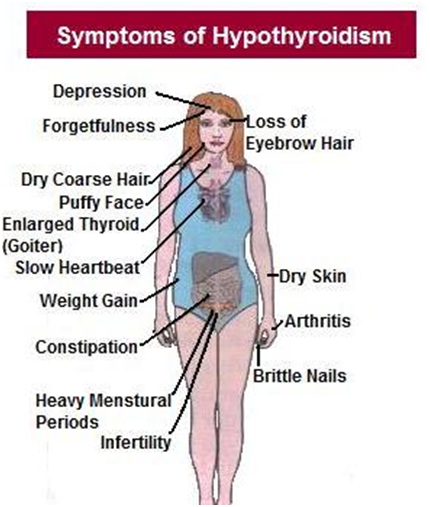Weight Loss Product Warnings — How to Spot Bad Pills
There are numerous ways to make a bad weight loss product look good. How to Spot Bad Pills is the first article in a series on evaluating weight loss products. My hope is to provide you with reliable, easy to understand, and useful tips for spotting bad weight loss products.
For the purpose of this article, the phrase, weight loss pill, refers to over-the-counter, non-prescription weight loss supplements. The following six tips will help you identify weight loss pills that don’t back up claims with evidence, cite poorly designed research studies, don’t work, and possibly cause serious harm.
The tips, arranged in no particular order, are effective in spotting glaring omissions of evidence, misrepresentations, and outright lies. However, many marketers have become quite skilled in the art of statistical illusion, fooling even those of us with extensive experience in statistical analysis.
What does this mean for you? Use the six tips from How to Spot a Bad Pill as part of your own overall assessment and not as a definitive evaluation. A “good” weight loss pill based upon my six tips, does not necessarily translate to a well studied, safe, and effective product. However, a bad pill here is a bad pill everywhere.
With that quick disclaimer, let’s get started…
Bad Pill Tip #1 — References
Match each claim cited with a reference. The reference should be clear and include the author’s name, the location of the study, primary sponsor, title of study, publication source, year, volume, and pages.
A solid claim made for a weight loss pill should not be sales oriented. I fully understand that there is a time to sell. However, I am assuming you are beyond that, and need real information about this weight loss product in question. As you investigate the pill, and the sales copy never seems to go way, that’s a red flag.
Lets look at two different claims. The first one is NOT a solid science claim…“Amazing New Weight Loss Pill Maximizes Weight Loss…”. This belongs back in the sales copy.
Instead, here is a claim well grounded in science…
“The percentage of weight loss was significantly higher in the test group at the end of the 5 week study…(6)“
Notice the reference is clearly cited and displayed by the number 6. This is identifying the 6th listing on the reference page as the source. This brings up a related topic about the reference page. All ads and websites should have a reference page.
As a matter of fact, the reference page is more valuable than the testimonials. It is a list of the actual studies used to make a case in favor of a weight loss product.
To see an example of a reference page, use this link, Weight Loss Pill Reference Page.
Bad Pill Tip #2 — Mechanism of Action
Verify how the weight loss pill works, also called the mechanism of action. Every pill, prescription drugs included, should have the mechanism of action clearly stated with references. Do not label a weight loss pill as “good” without a description on how it works.
Bad Pill Tip #3 — Author
Verify the primary author referenced to make the best claim or the author referenced for making most of the claims. Verify, in this case, means to check the reference as “real” and also test the “marketer” for how accessible the information is to get and review.
Bad Pill Tip #4 — Subjects
Investigate the number of subjects that have been tested using the weight loss pill in question. This is difficult to judge, but understand that the smaller the study, the less reliable the results. One study with 10 subjects is not enough to make any significant claims.
When isolating one study, the number of subjects needed to produce reliable results depends on several factors. I suggest looking through the information provided to you for references to choosing the right number of subjects. If they take the time to write about it in their official study report, then, most likely, they had the best possible number of subjects.
In general, if you’re reviewing one study measuring one variable, you would like to see at least 50 subjects (n=50). However, we often lower this standard given the difficulty in recruiting for studies.
Bad Pill Tip #5 — Side Effects
A well designed, unbiased study does not hide reported side effects (also called adverse events). This should be as easy to find as the headline of the sale copy or the order form. If it’s hidden, stay away from that weight loss pill.
Bad Pill Tip #6 — Help
If all else fails and you just can’t call it a good or bad pill, call your health care provider. Let the person answering the phone know exactly what it is you need. Say something like, “I need feedback on a new weight loss pill, called Pill ABC. Is this a bad pill for me to take or is it a good one?”
Personalize the reason for needing the information and the response time will triple. Since you made it clear you’re considering taking the pill, they will get back to you fast to avoid any adverse event. If they don’t, consider finding a new health care provider.
Obviously, there are several other areas to critique a weight loss pill. But these are 6 excellent tips that will help you decide if the pill is good or bad. It simply comes down to checking for very basic information that any credible scientist or physician would display or provide immediately.
Not passing just one of the tips is enough to label it as a bad weight loss pill.
To Healthy Living!
Michael A. Smith, MD
Diet Basics Website and Resource
Dr. Smith is the primary physician and consultant for the Diet Basics Website of the Weight Loss Professional. Stay tuned for the second article of the series called Weight Loss Product Warning.
Please visit the Diet Basics website and take advantage of all the free offers…original e-books and articles, a top rated newsletter, and much more.
You can visit the site at, weight-loss-professional.com
-
Three Sure-Fire Ways To Lose Weight Get Healthier & Feel Great Without Dieting
-
A Simple Plan For Weight Loss
-
Food: The Proof Is In The Portion
-
Weight Loss Can Be Achieved In As Little As 5 Days By Increasing Your Metabolism
-
Carnitine Weight Loss Revealed: Why L-Carnitine Should Be The #1 Weight Loss Drug
-
Simple Plans for Social Eating and Travel
- DON'T MISS
- 20 Ways to Lose Weight
- Want to Succeed on Your Diet, Find a Diet Buddy
- Fat-Weight Loss Strategies – Don’t Let It be a Dream – You Too Can be Lean
- Weight Loss and Dieting Secrets – What You DON’T Want to Know!
- Sleep Well and Lose Weight
- Fat Burning Soup Recipes Review
- Waist Circumference
- Why do people get fat? – Understanding Obesity
- Vitamins and Minerals for Weight Loss
- Baba Ramdev Medicine For Weight Loss And Curing Obesity




